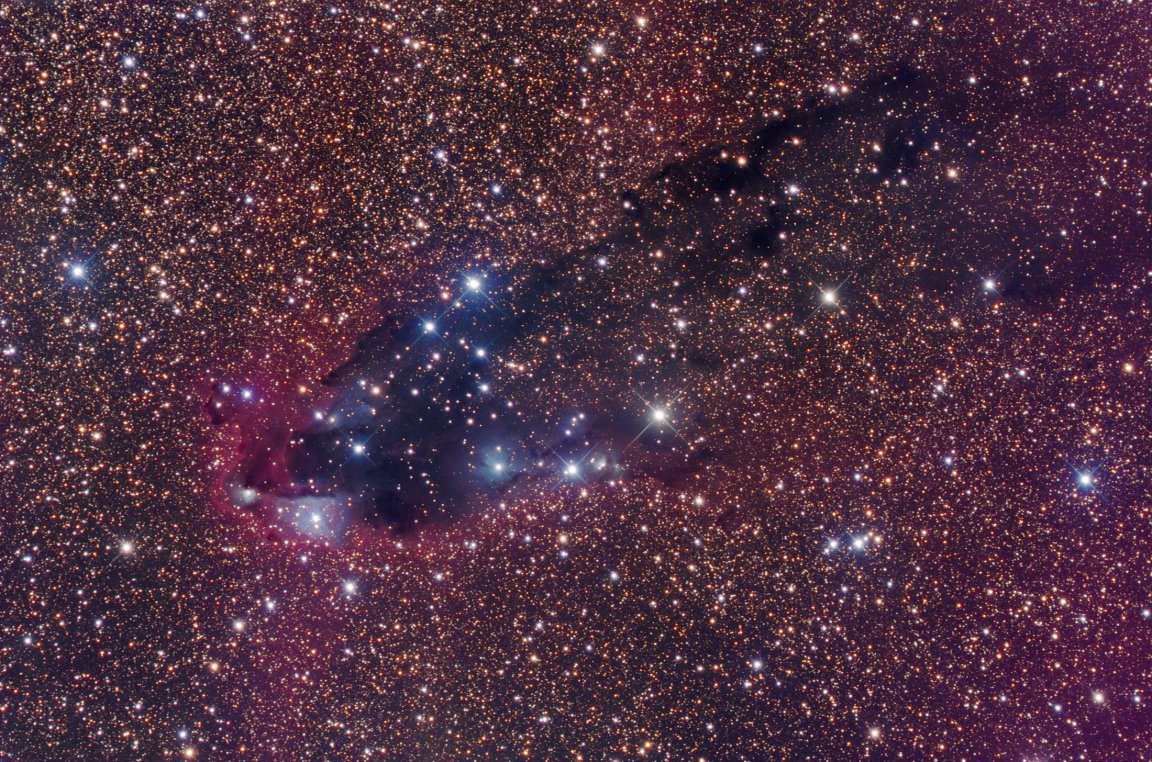

Lurking about 5,000 light-years from Earth is an open cluster of young, energetic stars, dubbed NGC 6231. Given their less-than-Sunny disposition, these OB-type stars can wreak a lot of havoc on their surroundings. Proof of this can be seen in today’s featured photo.
Despite being a little over 100 light-years away from the nebula pictured here — sometimes called the Dark Tower in Scorpius (formally dubbed IC 4628) — these stars have had a noticeable impact on interstellar gas and dust. In some regions, the ultraviolet light streaming from the surface of each star has carved out large cavities in the gas.
These cavities, paired with contrasting shades of black, make the region a picture of perfection. The black comes from fine grains of interstellar dust, which form dark nebulae when it has gathered in vast quantities. However, calling this a dark nebula is only telling half the story, as the gas and dust combine to generate something called a cometary globule. This impressive example spans nearly 40 light-years across, and is believed to be the site of ongoing star formation. Said newly-formed stars play a role in setting the hydrogen gas alite, powering the characteristic glow of ionization (pictured in red). When their light is scattered by the nebula’s dust, they also create several small reflection nebulae (seen in blue).
The cluster itself, NGC 6231 (also known as the Northern Jewel Box, or the False Comet Cluster), also belongs to the Scorpius OB1 association.